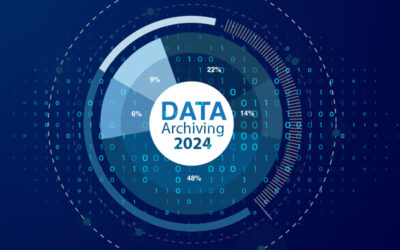Court exhibits are convincing pieces of legal evidences for your case. While document exhibits can be scanned and electronically filed, non-document exhibits such as audio files, physical objects, and videos cannot be electronically filed. In this blog, we look at the process of scanning document exhibits so that they can be electronically filed in court. Given the importance of these exhibits, any kind of distortion of the document can have a negative impact on the outcome of the case. These documents are part of the judicial records and scanning of the same must retain the details.
For instance, medical records submitted as court exhibits should necessarily be converted to digital format as they are intensive with vital data. Bulk document scanning services can help ensure that these highly confidential documents are scanned and secured in an efficient manner.
Pre-requisites for Scanning Exhibits Based on Court Requirements
The format of the file that has to be submitted is the discretion of the court. So, the scanned document should be in the format that is acceptable. The following are major considerations when scanning court exhibits.
- Legibility
- Documents should be free of poor color contrast
- Scanned document is defective if the readability is impeded by torn and folded pages. Therefore, while converting these documents special care must be taken to avoid distortions.
- The quality of the scanned document must be ensured. It should have a minimum of 300 dots / pixel per inch.
- The converted documents should meet the compliance requirements put forth by the court.
The core reasons behind the digitization of court exhibits are the ease of navigation, accessibility, and safeguarding important information. A document scanning company coordinates the entire steps needed for scanning by specifically focusing on non-repudiation of the documents.
Follow the Steps Below for Effective Scanning of the Exhibits
- Know the court requirements: Understand the formatting requirements of the court prior to scanning. The submissible format might be PDF, JPEG etc. Scanning the documents before the deadline is important to avoid delaying court hearings or trials.
- Secure originals: The original document which is in paper format has to be secured safely for preserving confidential data as well as for future reference. Keep a copy of the scanned document in an external hard drive to review documents if needed.
- Ensure image quality: The court exhibit should have excellent clarity so that all the details in the documents are readable. It should be scanned at 300 dots per inch, which is the minimum required specification necessitated by the court for legal proceedings.
- Protect the privacy of the clients: When a document is accessible online, it is vulnerable to security risks. So, the metadata in the document should be completely removed to avoid misuse of identity information of the client or any comments or annotations added in the office. This step should precede the conversion of the file into machine-readable format.
- Make the scanned documents searchable: Use Optical Character Technology to convert the scanned file or image to a machine-readable form so that it can be used for data processing like editing and searching. This procedure is required by most state court rules that require the documents to be searchable.
- Bookmark the scanned images: Ensure that the scanned images are properly marked and organized. This eases retrieval of important documents whenever needed.
- Auditing the quality of the images: The imperfections in the paper files such as folded pages, skewing or speckling should not affect the quality of the scanned document. The scanned content should be legible to the human eye. Therefore, check for the quality of the scanned document and confirm that it is readable and well-scanned.
Attorneys handling complex, document-intensive cases can entrust the scanning of exhibits to a good document scanning company, and benefit from state-of-the-art scanning and conversion solutions.




